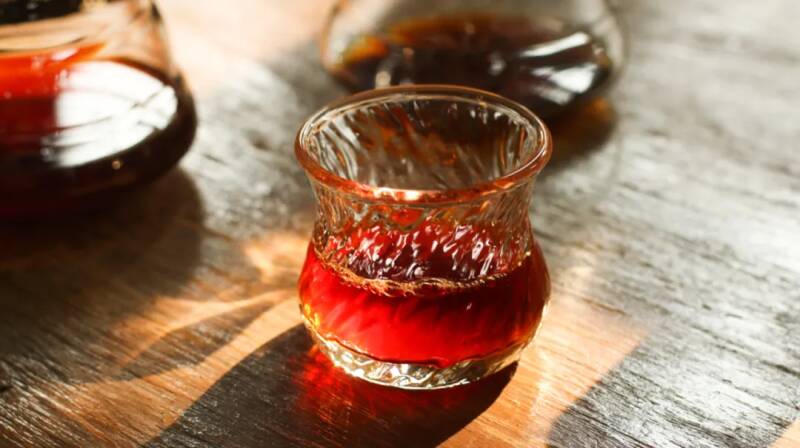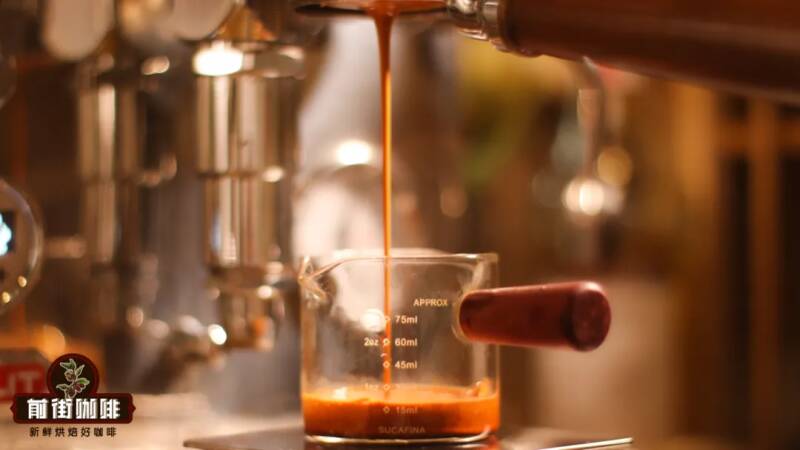What is the reason for the turbid coffee? Why does the brewed coffee have fat? Can I drink the coffee if it is not clean?
When we talk about whether a thing is good or bad, we always make a comprehensive assessment from multiple angles or indicators. Take coffee for example, the aroma, taste, length of coffee, each is a cup of coffee is good or bad evaluation criteria. But there is no shortage of friends who will be unique, using the penetration of coffee liquid as an indicator to evaluate whether it is good or bad. For example, the clearer and cleaner the coffee liquid is, the better the coffee will be; the more muddy the coffee liquid is, the less delicious it will be. (the cleanliness of this article refers to the permeability of the coffee liquid.)

Generally speaking, what will be bound by this "standard" is black coffee. Because they will not have other materials that will affect the taste and appearance of coffee, this "indicator" is mainly aimed at black coffee groups. So, can the cleanliness of coffee liquid really be used as a criterion for evaluating the quality of a cup of coffee?
What affects the cleanliness of coffee? Qianjie's suggestion is that it is best not to judge the quality of coffee by vision, but mainly by taste. Because the cleanliness of coffee liquid is mainly determined by the way of coffee extraction and filtering equipment.

Some coffees look cloudy because the liquid contains certain insoluble substances. Oil, fine powder, are insoluble substances, when their existence reaches a certain amount, it will bring a dirty, turbid appearance to the coffee. For example, use coffee extracted from a pressure pot and American coffee in the Italian coffee system. This is because when these coffees are made, the utensils used cannot isolate some small insoluble substances, causing them to be added to the coffee liquid. And because these substances are too small to be completely caught by the human eye, they look like coffee is cloudy. But in fact, in the right amount of these substances will not have a negative impact on coffee, but will bring positive benefits, such as fine powder can make coffee more mellow, oil can make coffee more full aroma.
Take a simpler chestnut. Is the coffee made from hand-brewed coffee very clean and transparent?
But you know, this is the case where the filter apparatus is filter paper. The gap of the filter paper is very small, and the filtering performance is extremely high, so it can separate most of the fine powder and grease (not completely isolated, or will run out some), so the coffee is very clean. But when we replace the "filter paper" with "flannel filter cloth" or "metal filter screen", then because the gap in these utensils is too large, more fine powder and oil can seep out, and the coffee will be somewhat turbid. There is even an obvious layer of grease floating on the surface. So, will this make the coffee bad?
No, I won't! Because what controls whether the coffee is good or not is the quality of the beans and whether the extraction is reasonable. Therefore, Qianjie does not recommend making a decision on whether the coffee liquid is muddy or not. However, there is a situation in which we can see from the muddy coffee that the coffee may not be that good.
What is this situation? In addition to the filtration performance of the appliance will change the cleanliness of the coffee appearance, the coffee itself may also change the cleanliness. For example, when the coffee is just brewed, it is very clear and transparent, but with the passage of time and the decrease of the temperature, the coffee gradually becomes a little cloudy.
This is the condensation caused by a drop in temperature. Caffeine easily merges with chlorogenic acid, which becomes insoluble in water and then makes the coffee cloudy. The taste of cold coffee is well known and will not be so "close to the people", so when the quality of beans is not good, or the extraction is unreasonable, cold coffee will be very difficult to import. So in this case, some friends will develop the idea that turbid coffee is bad, which is understandable, but don't accidentally hurt the good coffee extracted in other ways.
-END-
Important Notice :
前街咖啡 FrontStreet Coffee has moved to new addredd:
FrontStreet Coffee Address: 315,Donghua East Road,GuangZhou
Tel:020 38364473
- Prev

What is the difference between black coffee and American coffee? Is hand-brewed coffee black coffee? What is the difference between a mocha pot and an espresso machine?
Recently, popular videos on the Internet often appear with the name "black coffee". It happens that the coffee held in the blogger's hand looks like an American style, so it is inevitable that some Xiao Bai friends who don't know much about it will ask below: Is black coffee American? What is the difference between black coffee and American coffee? So today, Qianjie will come and share it
- Next

Ethiopia's 2024COE results released Sidamo wins a total victory
Recently, Ethiopia held the 2024 Excellence Cup competition, and the results of the competition have now been announced. Among the results of this time, sun treatment won a total victory, and among many Ethiopian producing areas, Sidamo sidama performed the most. In fact, as early as 2020, Ethiopia held the first C.
Related
- What effect does Italian American coffee with filter paper have? Will coffee taste better if it is put on filter paper at the bottom of the powder bowl?
- What is the color difference in coffee beans? What are the characteristics of honey processed coffee beans? Why are the anaerobically treated coffee beans uneven in color?
- How does novice Xiaobai quickly get started and make coffee? Newbies learn to make coffee by hand and share the specific steps and process process!
- Costa tea has a shelf life of 100 years?! Expert: Unable to verify
- It's a huge uproar! American milk addition was rejected by Manner employees?!
- Mocha pot coffee bean recommendations| How fine and how much powder should be used for grinding? What parameter ratios do I need to use to make milk with Mocha pot coffee?
- What are the characteristics of the world's top ten coffee beans treated with Costa Rica honey? How to make black honey kadura from Tarazhu Pilon Processing Plant taste good?
- How to make deep-roasted coffee? What grinding water temperature does authentic Jamaica Blue Mountain No. 1 coffee use to brew it well?
- Selected high-grade rose summer coffee flavor tasting guide Why Panama rose summer has the aroma of flowers and fruits
- What equipment does a novice Xiaobai need to buy to learn to make coffee? Filter cup electronic scale bean grinder manual flushing pot purchase guide

